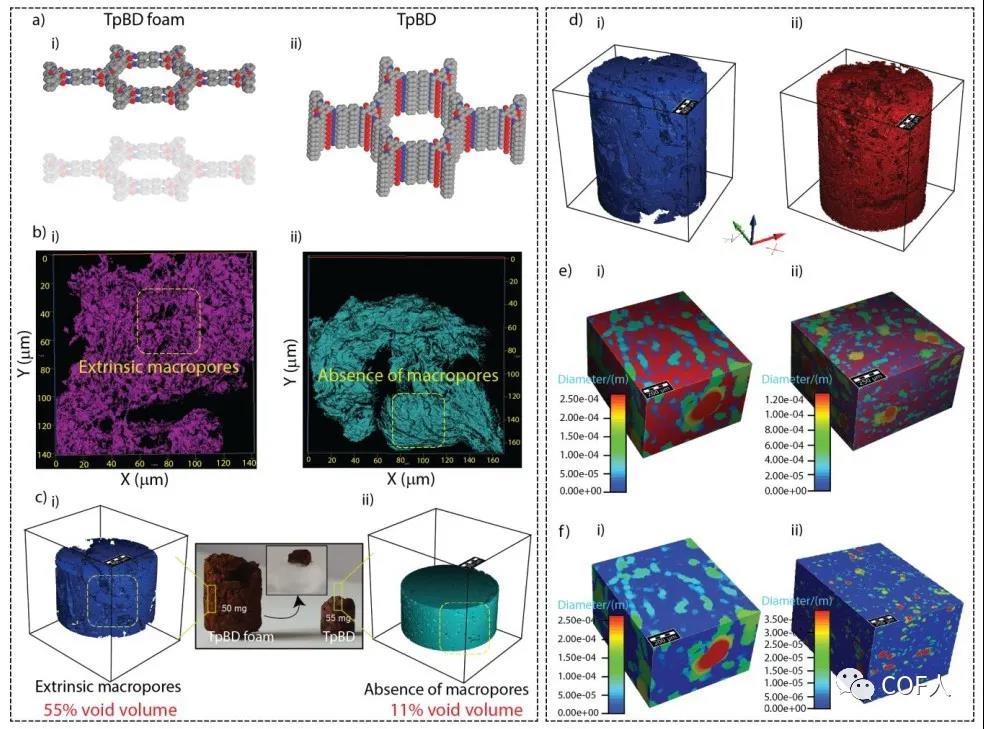3D printed graded porous COF sponge! ! Connect the three major scales of micro-meso-macro! !
QQ Academic Group: 1092348845
Detailed
【Origin】
In recent years, COFs have been successfully used for the adsorption and separation of harmful substances in water due to their unique intrinsic micropores and mesopores . However, in practical applications, powdered COFs are difficult to achieve high mass transfer efficiency no matter how they are stacked, thus limiting their further large-scale application!
Introducing large pores into the powder accumulation type material and effectively connecting it with the internal micro / mesopores is an excellent method to improve the mass transfer and adsorption efficiency. Herein by aid 3D printing incorporated graphene oxide (GO) in the overall matrix COFs as a chemical spacer layer (chemical spacers), an arbitrary shape can be obtained stably from the COF sponge supporting structure. More importantly, this method assembles COFs into 3D macro materials while achieving a hierarchical porous structure .
[Synthesis of COF sponge]
When the 3D printing technology is used to manufacture the macrostructure of COFs, the microstructure at the atomic level will also be maintained. However, for a specific macro structure, 3D printing ink must have certain rheological properties, such as shear thinning and stable physical and chemical properties. However, the granularity and non-viscosity of COFs is an obstacle to the subsequent formation of large-scale macrostructures!
Considering this, a new strategy is introduced in this paper, that is, using graphene oxide (GO) aqueous solution as a blowing agent to achieve controllable 3D printing . Since the oxygen-containing functional groups of GO itself can form intermolecular hydrogen bonds, its aqueous solution shows the characteristics of weak gel. In the COFs reaction monomer slurry, GO aqueous solution was introduced as a foaming agent to form large pores between COFs crystals, and various shapes of self-supporting COF-GO sponges were successfully prepared (Figure 1). The direct reason for the formation of large pores is (focus on!): After forming the block, the water is directly removed from the COF-GO by freeze-drying , thereby leaving a porous macrostructure. Editor‘s note: The article also explores the problems of liquid rheology encountered in the process of 3D printing in detail. Interested students can move to the original text.

Figure 1 Schematic diagram of COF-GO sponge synthesis and electron microscopy characterization
【Characterization of COF sponge】
After that, the author carried out micro-to-macro structural characterization of the synthesized COF-GO sponge , as shown in Figure 2. First, it was proved by PXRD that the COF-GO sponge obtained a highly crystalline COF, and then tested its nitrogen adsorption and using NLDFT The method calculates its pore size, indicating the micropore and mesopore properties of COF-GO sponge. The combined SEM and TEM electron micrographs can reflect the micro-meso-macro-composite structure characteristics.

Figure 2 Characterization of the structure and morphology of COF-GO sponge
Afterwards, the COF-GO sponge was subjected to 3D imaging with a confocal fluorescence microscope (Figure 3 left) and microscale 3D X-ray tomography (Figure 3 right) to visually confirm the porous characteristics of the synthesized material.

Figure 3 Confocal fluorescence microscope 3D imaging (Figure 3 left) and 3D X-ray tomography
【Properties of COF sponge】
The 3D printed COF-GO sponge is composed of hierarchically connected pore structures of various sizes, which can interact with adsorbate molecules non-covalently (that is, physical adsorption) so that it can be effectively adsorbed and separated . Three different COF-GO sponges (TpBD, TpDq and TpAzo sponges) are used to adsorb dye contaminants methylene blue (MB), Congo red (CR), rhodamine B (RhB) and alkaline Fuschin (BF) , Bisphenol A (BPA), KMnO4 (KMN) and K2Cr2O7 (KCR) (Figure 4). Among them, TpBD sponge has the highest efficiency, universality and stability. And after adsorption, the COF sponge can be easily regenerated by organic solvent soaking and washing , and it has very good circulation (Figure 4g).

Figure 4 Dye adsorption performance of COF-GO sponge
Comparing the adsorption performance of methylene blue between COF sponge and bulk COF to illustrate the specific advantages of COF-GO sponge (Figure 5). The reason for the poor performance of bulk COF is that its highly stacked crystallites with non-microporous properties prevent the dye molecule solution from penetrating into the inner surface of the inherent micropore wall. This hinders the mass transfer of the solution and further promotes the excessive adsorption of dye molecules on the surface, thereby blocking the accessible adsorption core (inner core).
With author 2.5D confocal microscopy analysis (2.5D confocal microscopic analysis) Adsorption behavior of dye molecules in the COF-GO sponge, found that dye molecules can drill sponge inside layers. With a 3D X-ray microtomography image for (3D X-ray microtomography) flow analysis techniques, found that the higher the flow rate the greater the macroporous contactable dye solution, which further demonstrates the importance of macropores in the interior of the matrix for the COF contaminants adsorbed .

Figure 5 Characterization of COF sponge adsorption behavior
【to sum up】
In this paper, a series of COF-GO sponges were successfully synthesized using the method of introducing GO aqueous solution as a foaming agent , and caused the structure characteristics of graded pores with micropores-mesopores-macropores from micro to macro , showing excellent dye adsorption performance.
Editor‘s comment: This article seems simple but cleverly conceived. Doing research requires imagination and brain holes!
Original link: https://doi.org/10.1021/jacs.0c00555
Source of information: COF people
- Previous: Cui Yi & Liu Wei Chem
- Next: A Rising 2D Star: Nove


 Academic Frontier
Academic Frontier
